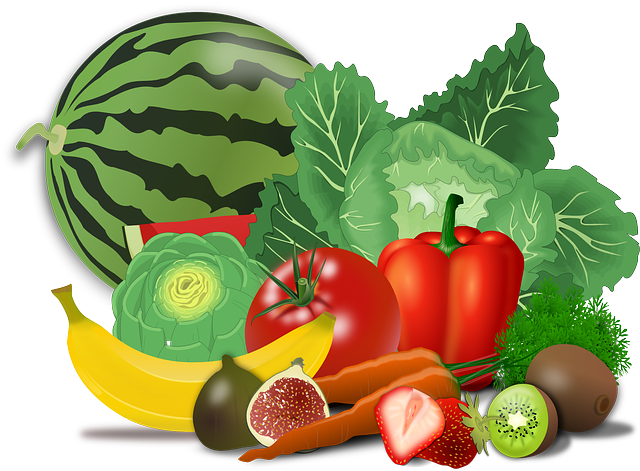Local food delivery and meal preparation services are adapting to meet the needs of customers with diverse dietary restrictions, particularly focusing on managing food allergies and intolerances. These services implement strict protocols to prevent cross-contamination, such as creating allergen-free zones and using dedicated equipment for preparation. They ensure clear communication about ingredients and potential contamination risks, providing detailed ingredient lists and environmental information to enable informed choices by consumers. The integration of user-friendly filters in their platforms makes it easier for individuals with dietary restrictions like gluten, nuts, dairy, and soy to find suitable meal options. By partnering with allergen-aware restaurants and chefs, these services offer meals that are both safe and enjoyable. They prioritize transparency and accuracy in ingredient sourcing, staff training, and menu labeling to maintain high standards of safety and quality. This commitment enhances the reputation of local food delivery services as reliable and trustworthy providers of allergy-conscious meal solutions. Keywords: Local Food Delivery Services, Meal Preparation for Dietary Restrictions, Allergen Management, Transparent Communication, User-Friendly Filters, Quality Assurance in Meal Safety.
navigating the intricacies of food allergies and intolerances has become a cornerstone of responsible local food delivery and meal preparation. This article delves into the nuanced differences between these dietary restrictions, offering insightful strategies for safe and inclusive meal planning. By exploring best practices within the realm of local food delivery services specializing in allergy-sensitive and gluten-free options, we aim to enhance understanding and support for those with specific dietary needs. Join us as we ensure that every meal is a reliable and enjoyable experience, free from health risks associated with food allergies and intolerances.
- Understanding the Distinctions Between Food Allergies and Intolerances in the Context of Local Food Delivery and Meal Preparation
- Strategies for Safe and Inclusive Meal Planning: Accommodating Dietary Restrictions with Local Food Delivery Services
- Navigating the Market: Best Practices for Local Food Delivery Services Offering Allergy-Sensitive and Gluten-Free Meal Options
Understanding the Distinctions Between Food Allergies and Intolerances in the Context of Local Food Delivery and Meal Preparation

When crafting menus for local food delivery and meal preparation services, it is imperative to navigate the nuanced differences between food allergies and intolerances to ensure customer safety and satisfaction. Food allergies trigger an immune response that can range from mild to life-threatening anaphylaxis, necessitating strict avoidance measures. On the other hand, food intolerances, while less severe, can still cause significant discomfort and vary in symptoms and triggers. For instance, lactose intolerance is a common condition where individuals cannot digest lactose, a sugar found in milk and dairy products, leading to gastrointestinal distress upon consumption.
Local food delivery and meal preparation services play a pivotal role in accommodating these dietary needs. These services must implement rigorous protocols to prevent cross-contamination, such as designating allergen-free zones in kitchens and using separate utensils and cooking surfaces for allergy-specific meals. Clear communication with customers about the ingredients and potential cross-contact points is essential. Additionally, providing detailed ingredient lists and preparation environments can empower consumers to make informed choices that align with their health requirements. By understanding and addressing the distinctions between food allergies and intolerances, these services not only enhance the well-being of individuals but also establish a reputation for reliability and care within the community they serve. This attention to detail is crucial in local food delivery and meal preparation, setting a standard that ensures every customer feels seen and catered to with the utmost diligence.
Strategies for Safe and Inclusive Meal Planning: Accommodating Dietary Restrictions with Local Food Delivery Services

Navigating food allergies and intolerances can be a complex challenge, but with the advent of local food delivery services, individuals with dietary restrictions now have more options for safe and inclusive meal planning. These services often feature menus tailored to various dietary needs, including common allergens like gluten, nuts, dairy, and soy. They ensure that each ingredient is handled separately to prevent cross-contamination, providing peace of mind for those with severe allergies. Moreover, these platforms typically allow customers to filter meal selections based on their specific dietary requirements, making the process of finding suitable options both efficient and straightforward.
To further enhance safety and inclusivity, many local food delivery services collaborate with restaurants and chefs who specialize in allergen-aware cooking. This collaboration ensures that meals are not only free from allergens but also taste great, catering to a wide array of preferences and needs. Additionally, these services often provide detailed ingredient lists and allergen information for each dish, enabling consumers to make informed choices without compromising on flavor or variety. By leveraging technology and partnerships, local food delivery services are transforming how individuals with dietary restrictions experience dining, offering a new level of accessibility and safety in meal planning.
Navigating the Market: Best Practices for Local Food Delivery Services Offering Allergy-Sensitive and Gluten-Free Meal Options

When catering to customers with food allergies and intolerances, local food delivery services have a pivotal role in ensuring safe and enjoyable dining experiences. To effectively serve this segment of the market, these services must implement rigorous protocols that begin at the selection of allergy-friendly ingredients. Partnering with suppliers who provide clear and detailed information about product compositions is essential. Delivery personnel should be well-trained to handle and deliver such products without cross-contamination.
Local food delivery services offering allergy-sensitive and gluten-free meal options must prioritize transparency. Clear communication regarding the absence of specific allergens and the presence of certified gluten-free ingredients is paramount. Menu descriptions should be precise, with a comprehensive allergen chart readily available for customers to consult during the ordering process. Additionally, leveraging technology such as online filtering tools can help customers easily identify meals that suit their dietary needs without sifting through irrelevant options. By adopting these best practices, local food delivery services not only accommodate the growing demand for allergy-sensitive meals but also establish themselves as reliable and trustworthy sources for health-conscious consumers.
In conclusion, the intricacies between food allergies and intolerances are critical for local food delivery and meal preparation services to understand and navigate. By implementing tailored strategies that prioritize safe and inclusive meal planning, these services can cater effectively to individuals with dietary restrictions. It is clear that the market for such specialized offerings, including allergy-sensitive and gluten-free options, is expanding, emphasizing the need for local food delivery providers to stay informed and adaptable. As consumer awareness and demand for personalized dietary solutions grow, the commitment to accommodating these needs within the realm of local food delivery will not only enhance customer satisfaction but also set a benchmark for inclusivity and safety in meal preparation.

